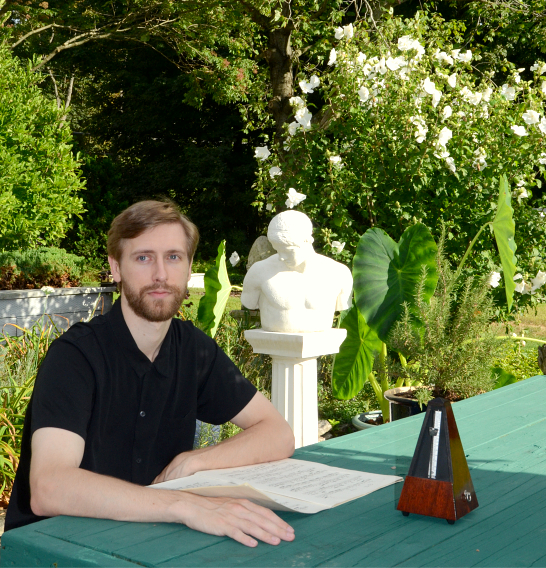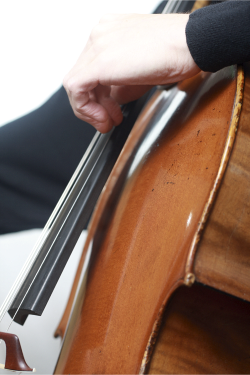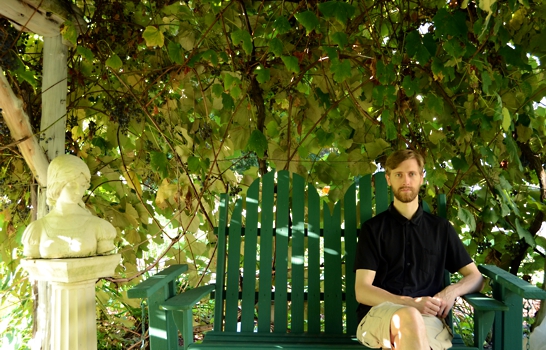



“Why should you think that beauty, which is the most precious thing in the world, lies like a stone on the beach for the careless passer-by to pick up idly? Beauty is something wonderful and strange that the artist fashions out of the chaos of the world in the torment of his soul. And when he has made it, it is not given to all to know it. To recognize it you must repeat the adventure of the artist. It is a melody that he sings to you, and to hear it again in your own heart you want knowledge and sensitiveness and imagination.”
One Bach biographer described the achievement of the six works for unaccompanied violin as “a lonely peak of grandeur” and the words are well chosen. They represent an ultimate sophistication and difficulty. The extraordinary inventiveness with which Bach created these masterpieces not only stretched the capabilities of the instrument but also require from the performer endurance, concentration, and critical interpretative insight to shape the separate movements into a logical whole. Lonely Peaks Records was organized with the fullness of that thought in mind, which inspires our recorded portrayals of high art in music. A good recording reveals a complex story, and can give one the view that classical music has a clarity and obviousness about it that, if your mind is open to it, you will see. We scale the high mountain and invite you to share the experience.
This is a brief background of Lonely Peaks Records and what we are about. My name is Peter C. Dzialo and I am a cellist and recording artist.

Thinking back, I don't have a clear memory of any time in my life when I did not play the cello. After a couple of years of study, I know my father inquired about what I would be able to do with the cello. My teacher replied, “Peter will be able to play all of the music ever written for the instrument”—and it happened like he said. You are called by the cello; it chooses you—and I didn't mind following the call. I began to make recordings as a dilettante, even a couple of years before I entered the graduate School of Music at Yale, at seventeen. My interest in the nexus between recording and high art grew exponentially while at school, to the point that I was capable of making a strong defense of recorded music as the reality of music. Following graduation in 2004, instead of continuing my studies at the Juilliard School, where I had been offered a place, I chose to dedicate my efforts to recording.

David Sanders, cellist, Chicago Symphony Orchestra, made a casual remark once that strongly influenced my thinking along the way, and this is an interesting sidebar to the story. He pointed out that “while it is a great honor to be a member of the CSO, for the most part, all we do is play the same forty (great) pieces over and over again...” Now that is hardly news—orchestras do this to draw consistent audiences and pay the bills. His acknowledgment of that fact fostered in me a dedicated interest in seeing the range of cello repertoire increased with worthwhile works—to identify the music written for cello with an eye toward expanding the great music repertoire for today's audiences. Soon my free time was typically being spent at Sterling Library at Yale, utilizing their access to the resources of the great libraries of the world to do research. I eventually looked into approximately 2,400 pieces and am confident that I have a fairly good knowledge about the music written for my instrument. It is understandable to me why some of these pieces fell by the wayside over time, while others ought to be brought forward from their undeserved obscurity, or rendered anew.
I look for honesty when we make a recording—what the instruments really sound like, presented with clarity and realism. We are more interested in placing the microphones where they need to be to hear inside the music and less interested in having our records sound like you are seated in the tenth row. Good recording technique will allow the recording artist to do his work, which is to reveal the multifaceted beauty that exists in the details of great music. We make great classical music recordings that usually feature the cello alone, or small ensemble chamber music, where there is more freedom to express oneself, more give and take between colleagues, more spontaneity and intimacy than are really ever possible in even the most successful orchestral recordings.
Recording can make music a much more cogent experience for the listener. The artist has more options and more choice in the performance that is captured. The listener benefits from microphone placement and always has the best seat in the house. Moreover, a wonderful performance isn't lost; it can be heard again and again. If your playback equipment is good, the experience of high art can be overwhelming—heard properly at home, intimately, quietly, and reflectively. Good music is made for an individual's consideration and appreciation...to move the emotions well. There is no rush to an insignificant performance at LPR. We know that a great recording is a joy to own, and that a listener can be drawn to high art as he would be to the hoard of a jewel thief—dazzling and irresistible.

Glenn Gould knew that the music you hear on a great recording is better than anything you can ever hear in a live concert. That fact does not do away with the importance of a concert hall in my view, but it may be why there is no artist whose recordings I enjoy more than Glenn Gould's. His attention to the recording process has always fascinated me. He knew that one needs to be one thousand percent into the project to get it right and we agree.
His view of recording is discussed in this video, an astonishing conversation about coming to terms with music through the medium of recording.

Subscribe to be informed of future record releases. We will not give out your email or bombard you with information.
"Like a good instrument, a good bridge can outlast centuries."









Bridge photos by Gerard KilBride and Mick Quinn, who are known for their passion for stringed instruments.